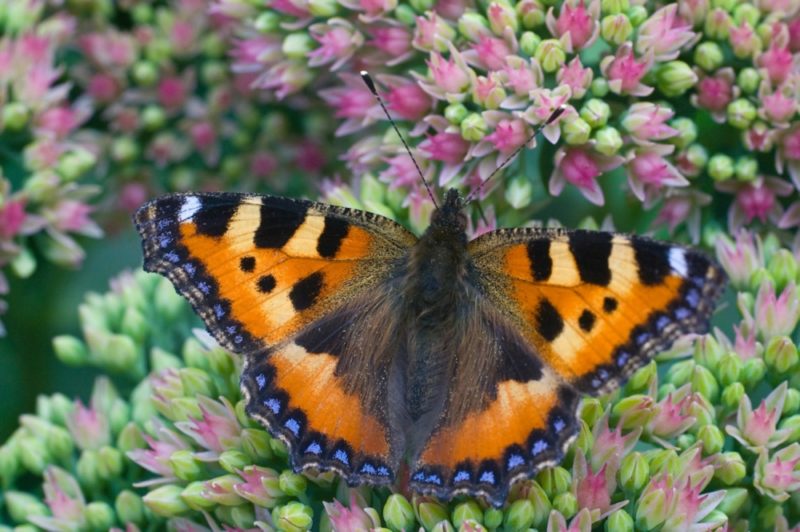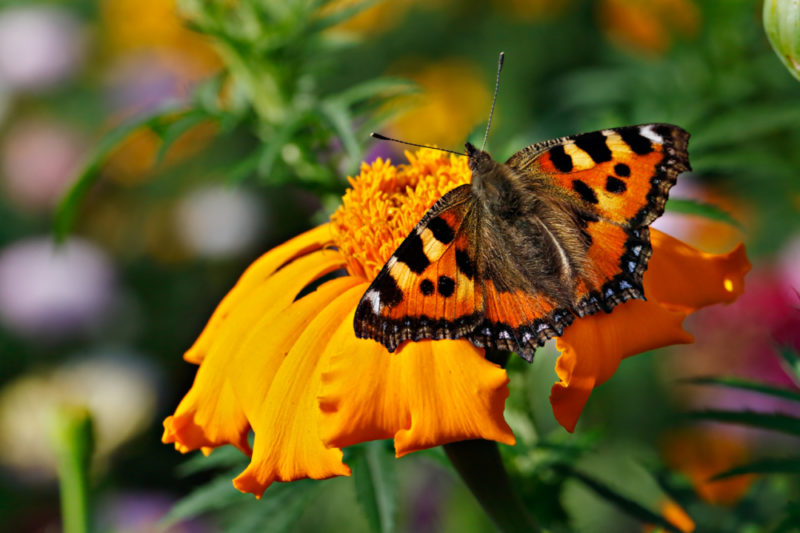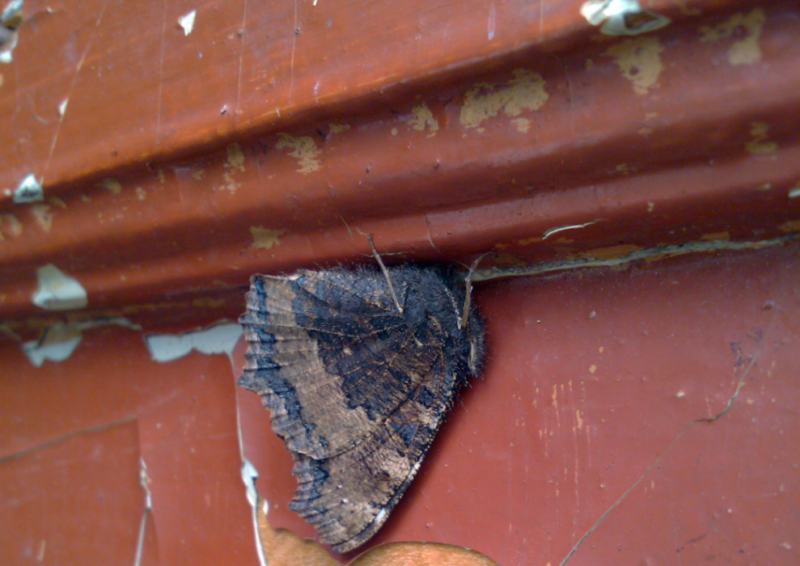Unlike many lepidopteran insects, the butterfly chocolate girl can distinguish reddish shades. This is far from the only surprising fact. We learn what the urticaria eats, and how it tolerates winter.
Material Content:
Description and features of butterfly-urticaria
Urticaria is a member of the Nymphalida family and has about nine subspecies.
She has several distinguishing features:
- wings of a reddish-brown hue;
- reach a span of 50 mm;
- there are white spots on the front wings;
- basal areas of saturated brown color;
- along the edges are denticles and protrusions in the form of crescents with blue splashes;
- antennae in the form of pins;
- dark breast with gray hairs;
- long proboscis to suck out nectar, which coils during the flight.
Chocolate caterpillars are almost black in color, and their surface is strewn with thorns. Over the summer, they molt and increase in size.
The chocolate girl is a day butterfly, which sleeps in the dark during the night, hiding in a shelter. She appears early in the spring and is fertilized all summer. She moves on the hind and middle legs.
The front ones are much shorter than the others and perform the following functions:
- touch objects;
- help to move;
- guarantee a comfortable take-off;
- contribute to a soft fit.
Females practically do not differ from males. Only specialists can find out who is who. If you rely on the description of the species, then often the female is larger than the male.
The butterfly is named so no coincidence.
On the inside of the nettle leaves, it leaves eggs. This is done by the chocolate girl several times in three months.At this time, the plant looks like a Christmas tree, decorated with garlands of a yellow hue.
According to popular belief, if hives flew out the window, happiness and the fulfillment of a dream were coming. You should take the butterfly in your hands and make a wish. It will come true soon. The main thing is to let the insect go free.
Chocolate habitat
Hive butterfly is found in almost all European and Asian countries. In Russia, it is observed everywhere, except for the territory located north of the Arctic Circle. Distributed in Belarus, Kazakhstan and Ukraine.
The chocolate girl loves forest edges, gardens and parks. It can be found in the mountains at high altitude. Once urticaria was found in the Himalayas above five kilometers above water level.
In different countries, stamps with the image of a chocolate bar were made. We are talking about Denmark, Norway, Hungary, Belgium, Poland, Finland. It is not surprising that urticaria is widely known on many continents. After all, she is one of the brightest representatives of daytime insects, remembered for its beauty.
What do insects eat?
The main source of nutrition for butterflies is flower nectar.
They look for him on the following plants:
- dandelion;
- marjoram;
- primrose;
- thistle;
- blackberry.
Hop and hemp are included in the diet of the insect. It often drinks birch sap.
Caterpillars feed on useful elements from nettle leaves. The chocolate girl is sensitive to dry periods. If there is little rainfall, its numbers are reduced. Poor nutrition provokes weakness and slows down the development of the insect.
It is noteworthy that the urticaria itself is part of the diet of rodents and birds, frogs and water snakes, vipers and lizards.
Pupation of urticaria
The female produces from two to three generations of offspring and leaves the eggs in the form of barrels on the bottom of the leaves. An adult insect complements them in groups of one hundred to two hundred pieces.
The process of pupation of a butterfly is divided into the following stages:
- a caterpillar appears from an egg;
- she hangs upside down from the leaflet;
- then attached to the leaves of the plant due to the sticking substance, which produces itself;
- her shell is thrown off;
- the pupa is exposed and remains in this form for another 15-20 days;
- after the larva bursts;
- a butterfly appears.
Surprisingly, the wings of the born chocolate girl are very short. They reach large sizes very quickly.
How a chocolate girl tolerates winter time
With the onset of cold weather, a representative of the Nymphalida family hides in cracks and hollows of trees. It flies out during the day if the sun warms. In November, urticaria hibernates. It freezes very much in winter, but does not die. This applies to fertilized females.
They hide for the winter in secluded places:
- between window frames;
- in the cavity of the trunk;
- in the attic;
- in the crevices of the mountains.
In the first spring days, butterflies come out of hibernation and try to find food by all means. When the nettle grows, they lay their eggs. Insects live in the wild for about nine months.
According to popular belief, if in fine weather the day butterfly suddenly began to restlessly fly and look for a safe place, it means that it will rain soon. This is how urticaria warns us of bad weather.


















